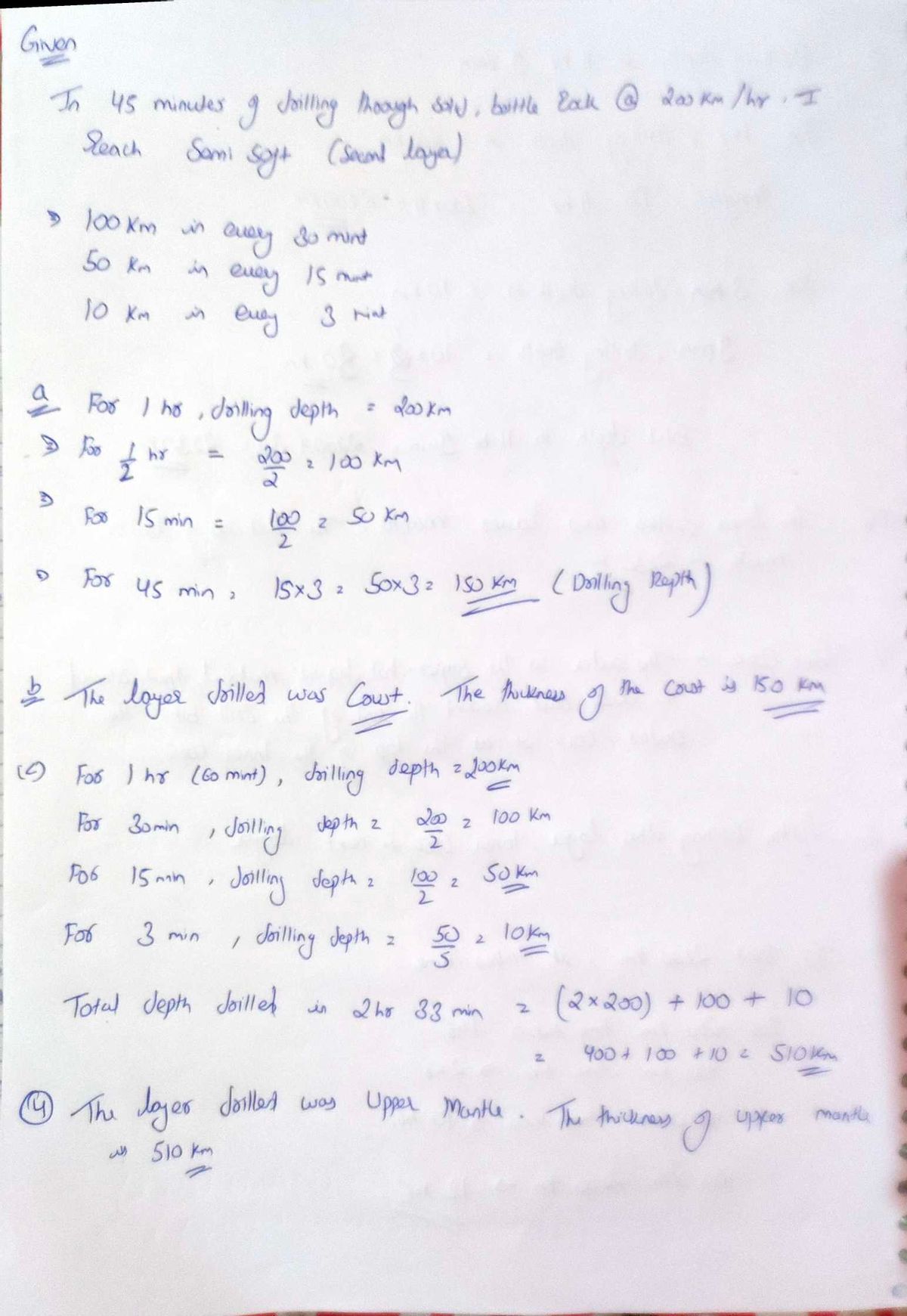rock for 45 minutes at 200 km per hour, how deep are you? 2. Now that you have drilled for 45 minutes to the depth you calculated in question 1, which layer(s) of the
After months of tinkering in your basement, you have finally finished designing and building
a machine that will allow you to drill to the center of the Earth. You take a few days off from
work/school and hop into your machine for a test drive. After about 45 minutes of drilling
through solid, brittle rock at a rate of 200 km (125 mi) per hour, you reach a semi-soft, very
hot, almost melted second layer that takes about 2 hours and 33 minutes to get through.
Eventually, you break through into a third layer that is solid, rocky, and is even more dense than was the first layer. After another 11 hours and 9 minutes of drilling at the same pace, your drill bit pokes through this tough, dense rock, and super-hot, liquid material of the fourth layer starts oozing out around the end of the drill bit. [Math hints: 200 km per hour means: 100 km every 30 minutes; 50 km every 15 minutes; and 10 km every 3 minutes]
Questions:
1. After drilling through solid, brittle rock for 45 minutes at 200 km per hour, how deep are you?
2. Now that you have drilled for 45 minutes to the depth you calculated in question 1, which
layer(s) of the Earth have you drilled through already ?
3. You continue to drill through a very hot, semi-soft, almost melted rock for another 2 hours and 33 minutes at 200 km per hour. You stop for a quick restroom break. What is your TOTAL depth ?
4. After reaching this new depth, which layer(s) of the Earth have you passed through?
5. So, you take a quick break to enjoy a sandwich. After some stretching and a short nap, you start drilling again. You drill through a solid, rocky, very dense, tough rock for another
boring, 11 hours and 9 minutes at 200 km per hour. When you stop to grab a snack and use
the bathroom again, what is your TOTAL depth ?
6. After this additional time, which layer(s) of the Earth have you drilled through ?
7. You notice that a super-hot, liquid material is starting to ooze out around the end of the drill bit. This material tells you that you have reached the top of which layer of the Earth's interior?
8. As you start to drill through this hot, liquid, jelly-like layer, which layer of the Earth would be next after this one ?
9. Using your knowledge of the Earth's interior and clues from the story,..
A. how would you know when you had drilled deeply enough to reach this next layer of the
Earth ?
B. approximately how much longer would you have to drill at 200 km per hour to reach the
bottom of the layer you're now in and the top of this next layer ?

Trending now
This is a popular solution!
Step by step
Solved in 2 steps with 2 images









